[Editor’s note: This article runs in a new section of The Tyee called ‘What Works: The Business of a Healthy Bioregion,’ where you’ll find profiles of people creating the low-carbon, sustainable economy we need from Alaska to California. Find out more about this project and its funders.]
When her daughters were young, Dianne Sanford toted them to the beach to wade alongside her in the dense eelgrass meadows growing just off the shores of where they lived in Delta, B.C.
With her youngest in her arms and her eldest at her side, Sanford roamed carefully through the eelgrass at low tide. The long green blades grazed against their legs as they tried not to disturb the congregation of colourful sea slugs, translucent squid eggs and camouflaged eelgrass isopods that flitted through the forest below.
“It was so lush that we would go in there at the low tides and the change of tides and walk, just to see everything that was in there, all that vibrant life,” Sanford said.
Beginning in 2002, Sanford has dedicated much of her life to mapping once-abundant eelgrass and its decline. In a “piecemeal” fashion, she surveyed roughly 80 per cent of B.C.’s coastline from Gibsons to Pender Harbour. Recently, she was part of a team from the conservation non-profit SeaChange Marine Conservation Society working to protect B.C.'s dwindling eelgrass stocks.
The keys to their success include a few strategically placed buoys floating in harbours and the goodwill of many.
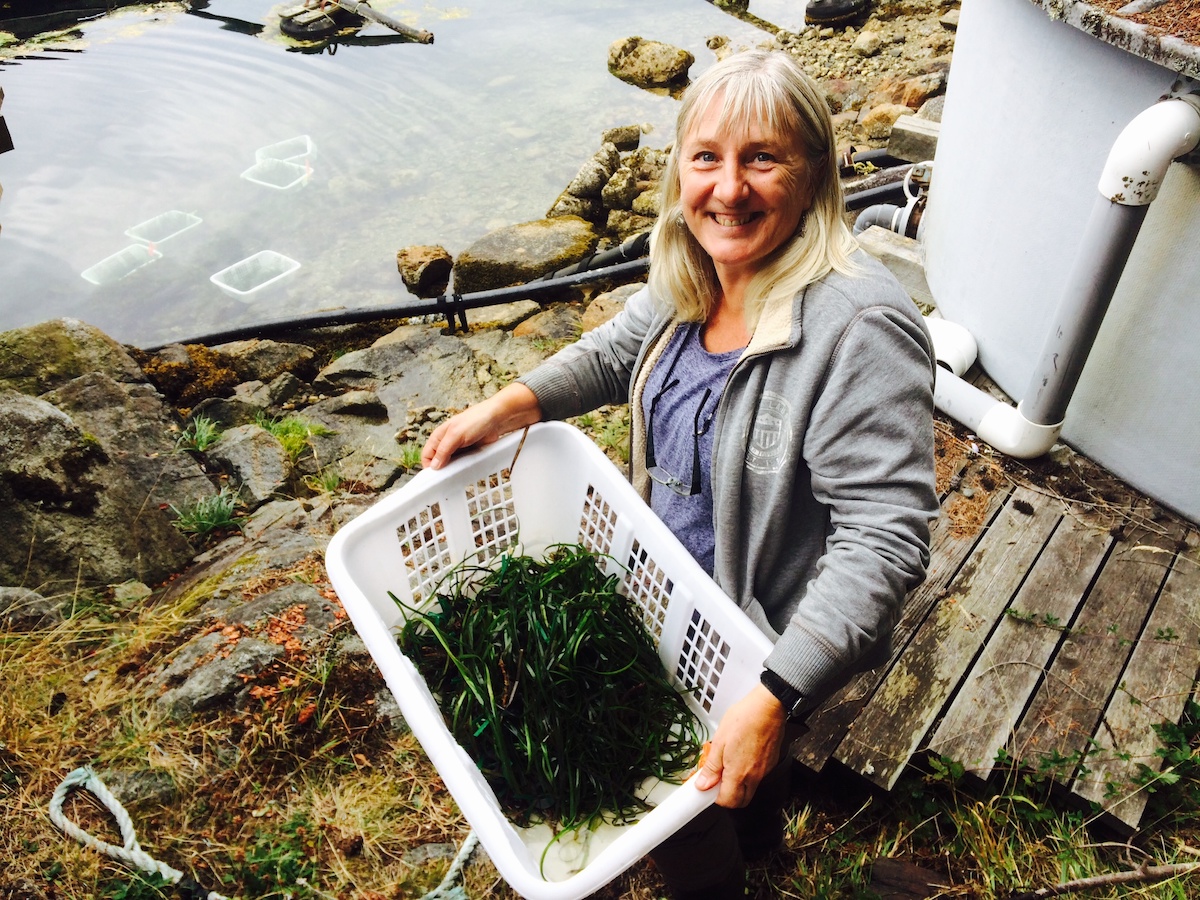
Commonly mistaken for a seaweed, eelgrass is a flowering plant. It has roots and requires sunlight to grow, which is why it regularly appears in shallow, sheltered waters close to shore. Its roots simultaneously sequester carbon and mitigate dangerous sediment erosion, which protects the shoreline in the event of a storm.
Eelgrass meadows are a small but mighty carbon sink. Despite occupying less than one per cent of the sea floor, they account for up to 18 per cent of carbon sucked up into world oceans, research in Nature Geoscience shows. Another study shows they absorb carbon about 35 per cent faster than tropical forests.
Within the Salish Sea’s dense eelgrass meadows — from Campbell River, B.C., to Olympia, Washington — almost 400 species feed or take shelter, depending on the season. Seagrasses all over the world, including eelgrass, have been reported to be declining at a rate of seven per cent per year since 1990, owing to factors such as coastal development and climate change. This places these meadows among the most threatened ecosystems on Earth, comparable to mangroves, coral reefs and tropical rainforests.
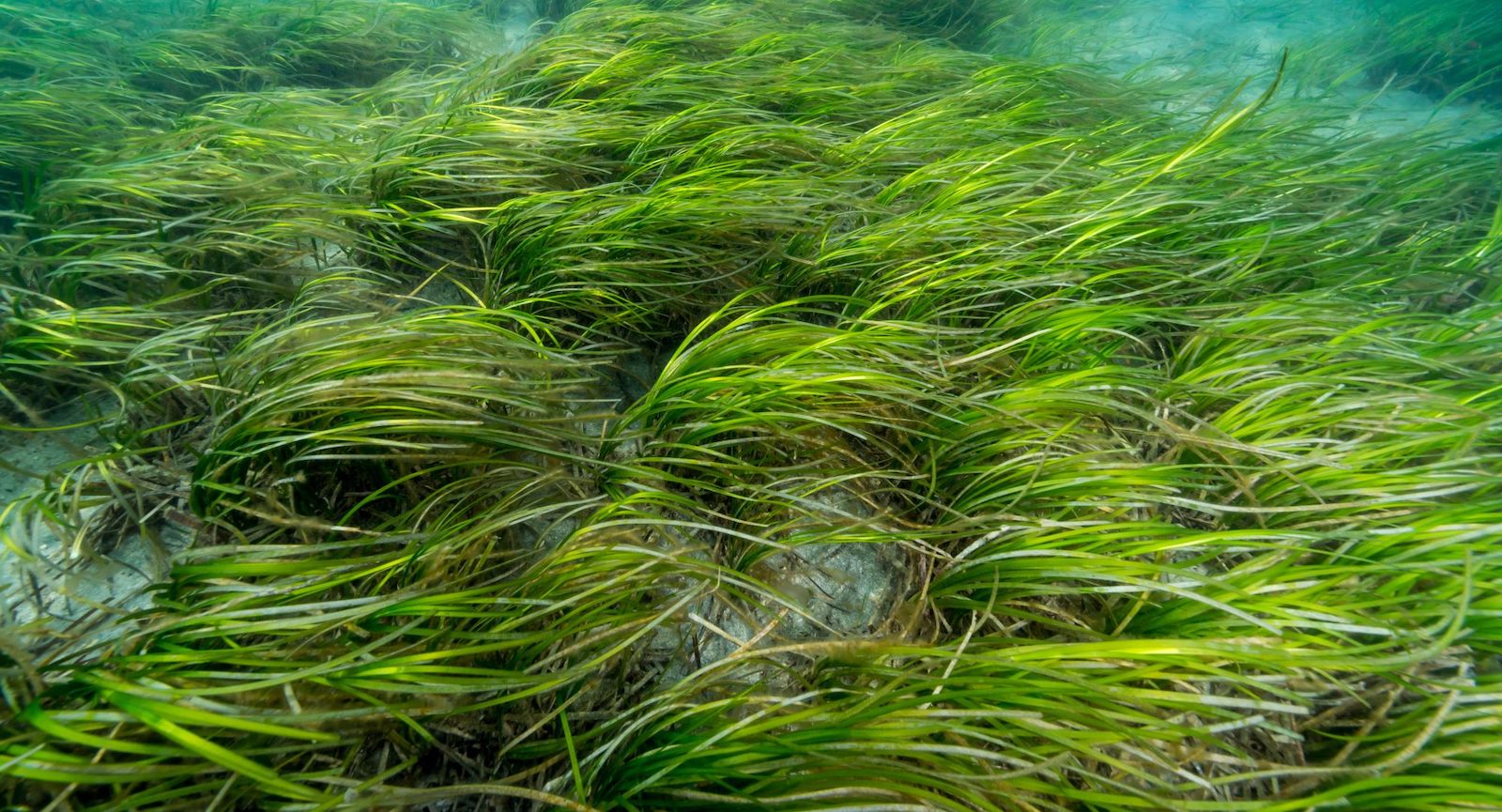
SeaChange is one of a handful of organizations, from California to Haida Gwaii, leading a burgeoning attempt to protect the world’s ocean-based meadows. Made up of 15 staff and numerous volunteers, SeaChange is not only reseeding eelgrass in places like Burrard Inlet, Gibsons and Bowen Island, but also working to keep people from damaging these important but unheralded ecosystems.
Enter the buoys of Bowen Island. Seven of them, as they bob up and down off the shores of Bowen Island’s Mannion Bay, are taking a stand against the demise of eelgrass, and winning.
Each buoy features an image of an anchor sitting in wavy green eelgrass, encircled and crossed out in red. Surrounding the image are the words “Voluntary: help protect eelgrass.” The buoy’s request is a well-intentioned one, void of any penalties or threats, but it’s also completely optional. Other than a willingness to respect the Mannion Bay buoys’ pleas to leave the eelgrass alone, there’s no reason for boaters not to anchor wherever they please.
Over the past five years, Fiona Beaty, former regional co-ordinator for SeaChange, has been on the frontlines of eelgrass restoration efforts in Mannion Bay. She said she likes the approach of the voluntary no-anchor zone because it has a softer edge to it and inspires community leadership.
“When you say that it's a voluntary thing, if boaters really want to access that area, they still can, but we're asking for their agreement or their compliance,” she said.
SeaChange received funding from the federal government in 2017 to conduct a large nearshore restoration project in four regions of the Salish Sea. Beaty said the opportunity to install buoys to outline a voluntary no-anchor zone “bubbled up” from this work, with the help of separate funding from Bowen Island Municipality.
After meetings with residents of the bay and the Squamish Nation, SeaChange installed the first five buoys in spring 2021, and two more buoys were purchased later that fall to fill in a few evident gaps. These buoys outlined the first-ever voluntary no-anchor zone on the Canadian side of the Salish Sea.
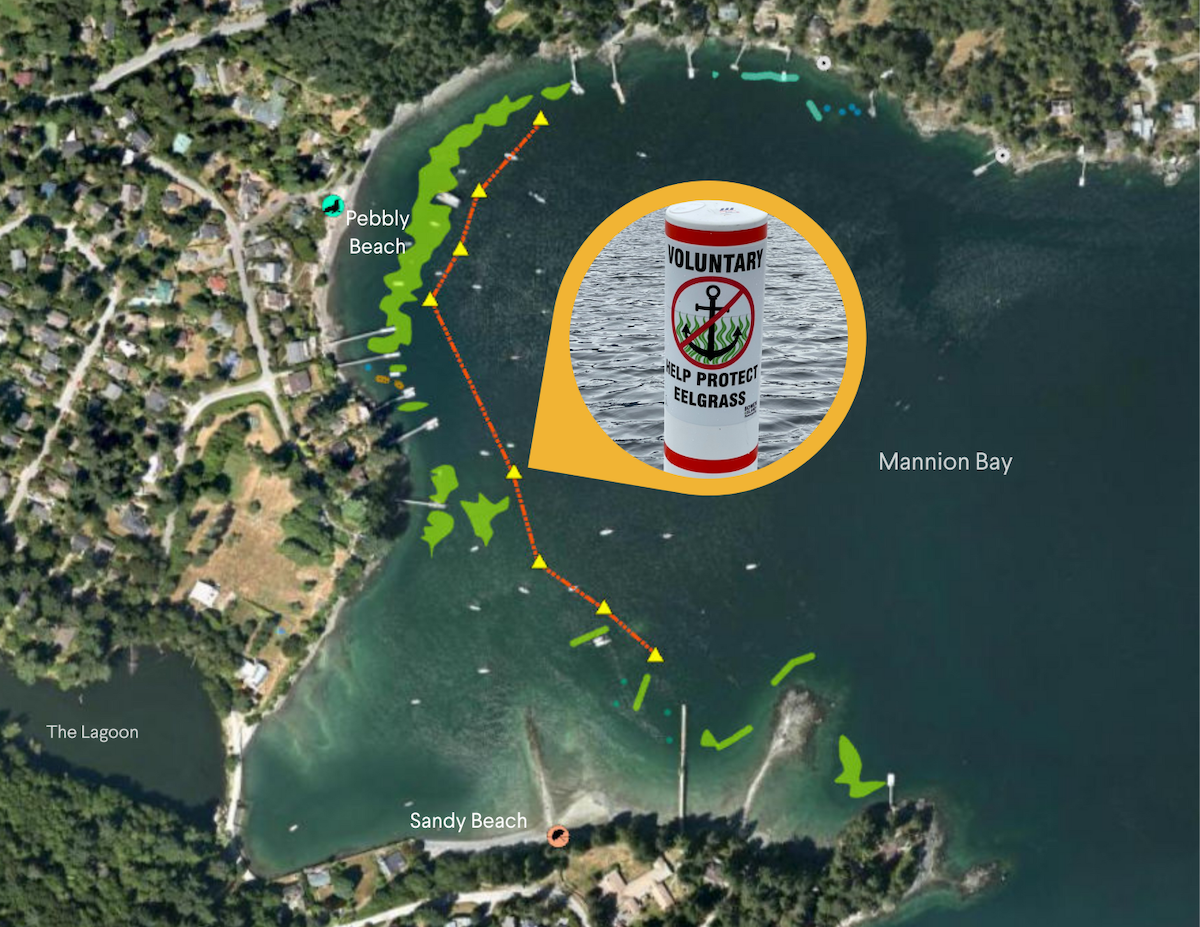
“Some folks have a bit of animosity toward eelgrass because it’s a sensitive habitat, so it can impact what you can and cannot build in the water,” Beaty said. “But for the most part, when people understood what we were trying to do, they loved it. Most people want a healthy ocean.”
Within a year, the eelgrass shoots transplanted to the newly protected area were already showing 100 per cent growth, according to Carla Skuce, manager of environment and parks planning for Bowen Island Municipality.
Barry Pynn, a resident of Mannion Bay, said the restorative effects of the voluntary no-anchor zone coupled with transplanted eelgrass shoots were instantaneous. The day after fresh eelgrass beds were transplanted into the area, Pynn used an underwater camera to capture the transformation.
“Fish and crabs came marching into the eelgrass as soon as it was down,” he said. “It was like a home right away.”
Very quickly, Pynn became enamoured with the effects of the eelgrass. He put in place a midline float system on his own mooring buoy to help protect the sea floor habitat. Used in the installation of the Mannion Bay buoys, a midline float system involves attaching a flotation device midway up a buoy’s tether and the use of a rope instead of a chain as the tether. This prevents the buoy’s tether from scouring the sea floor as the tide ebbs and flows, Beaty explained.
After the initial buoy installation, Skuce said, residents of Mannion Bay, like Pynn, would write to the municipality if a boat was seen ignoring the buoys’ request. However, since the installation of the two additional buoys in 2022, Skuce said she hasn’t received any complaints or observations about boats anchoring in the no-anchor zone.
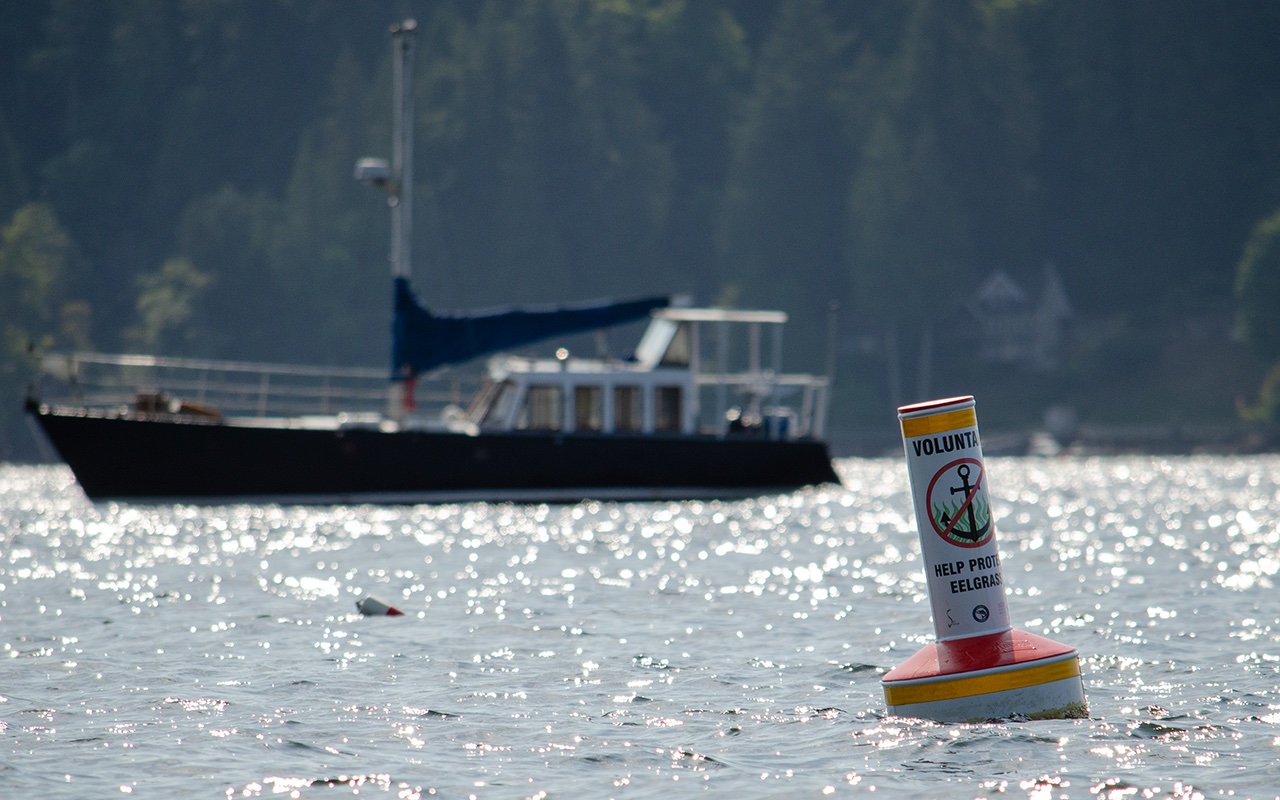
West of Mannion Bay, it didn’t take long for the transformative effects of this new voluntary initiative to trickle into the waters lapping at Gibsons’ shores.
A year after the installation of Mannion Bay’s voluntary no-anchor zone, Sanford helped co-ordinate the installation of a similar zone near Armours Beach in Gibsons, where the total eelgrass bed area decreased by 35 per cent between 2013 and 2019.
For Sanford, floating these five buoys means protecting the eelgrass conservation and restoration efforts to which she's dedicated the last couple of decades of her life. The 315-metre-long voluntary no-anchor zone is also an example to the rest of Canada of what’s possible, Sanford said.
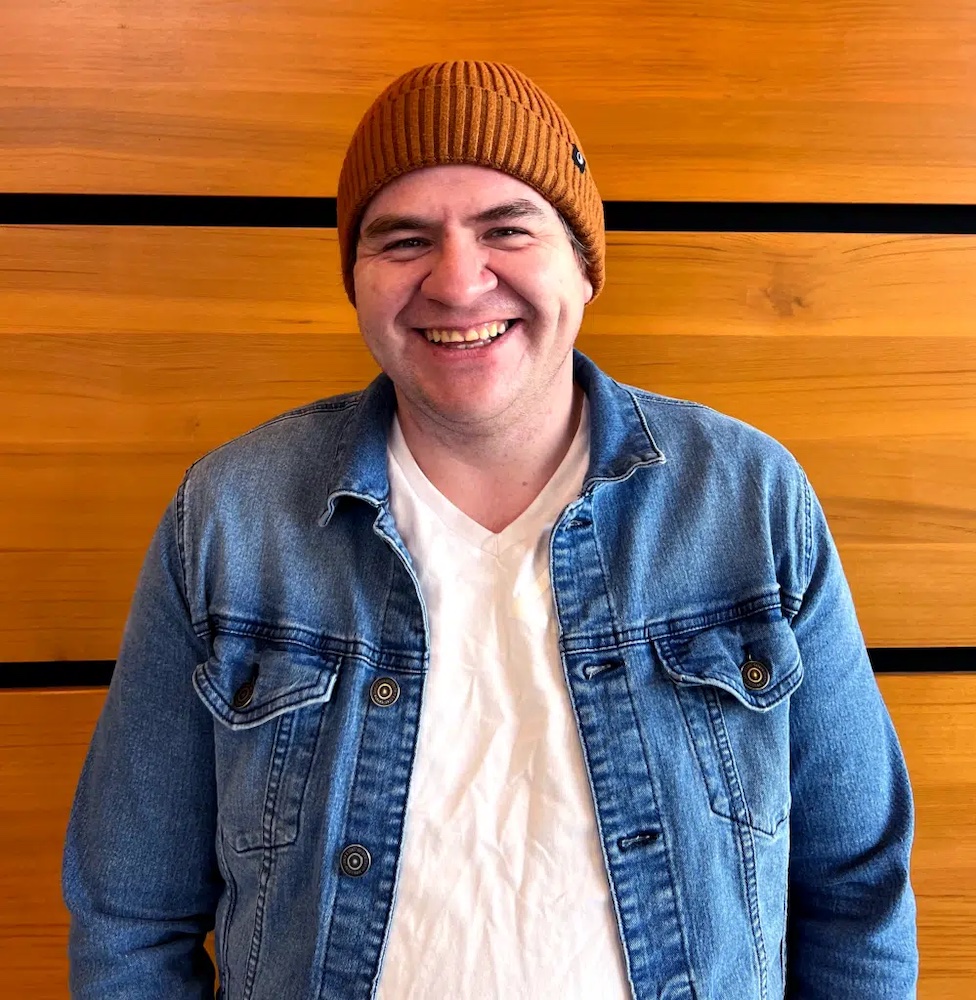
Kevin O’Neill, Tsleil-Waututh Nation elected councillor, says the abundance of species that once inhabited eelgrass beds played a key role in the lives of his people, whose traditional territory includes shores of Burrard Inlet, which serves as port for Vancouver.
“The inlet was our kitchen before. We've always been told and we've always shared that when the tide went out, the table was set,” O’Neill said.
Now, an increase in shipping and anchorages over eelgrass meadows in Burrard Inlet and along the coast serve as a death sentence. Not only do the boats cast shadows over them, depriving them of essential nutrients, but anchors also leave circular scars in meadows, slowly ripping up tufts of grass with their chains as they drift.
A map created by the Tsleil-Waututh Nation shows 33 commercial or industrial anchorages, 550 private recreational docks and 41 recreational boating sites have appeared in Burrard Inlet since colonial development of the area began.
So, in 2022, the Tsleil-Waututh Nation partnered with SeaChange to transplant more than 2,000 eelgrass shoots along the shores of the inlet, in an attempt to regrow what has been lost.
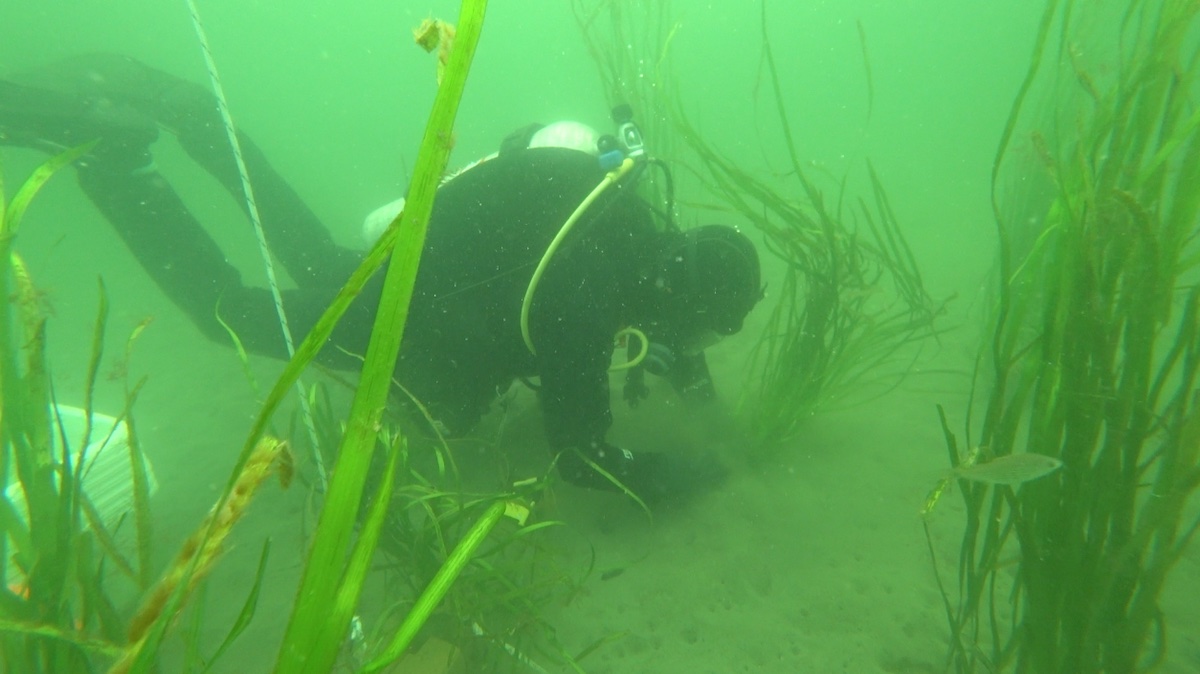
In the United States, some no-anchor zones, like the seagrass protection zones in Tomales Bay, California, are legally enforced rather than voluntary.
Canada is playing catch-up in another sense. The federal government has no standardized scientific monitoring program for assessing eelgrass sites. It’s begun creating a cohesive map of the country’s eelgrass beds, following the launch of its formal National Eelgrass Task Force in 2020, and key data is still being accumulated.
Protecting eelgrass, at the federal or local level, starts with knowing where it lives. Then the green forest of fronds can be helped to flourish.
“Restoration is always Plan B. Plan A is conservation,” Beaty said. “We want to protect the habitat that exists rather than trying to replant and mitigate damage that's already happened.”
For more than a century, colonial development has starved, shredded and scoured much of the eelgrass meadows along the coast of B.C.
For O’Neill, protecting the eelgrass means making space for community healing from all effects of colonialization.
“You can't really be yourself if you can't properly heal,” O’Neill said. “To me, the eelgrass is this one step forward into this big healing project for not just Tsleil-Waututh, but for the inlet, which is who we are. We are the people of the inlet.” ![]()
Read more: Indigenous, Environment




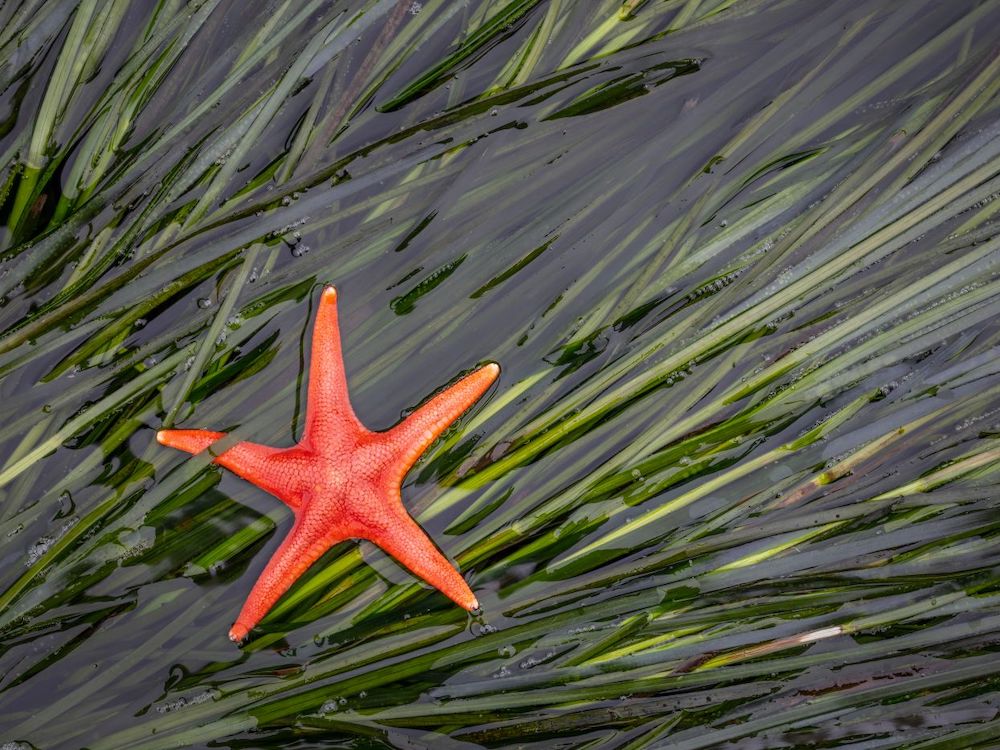












Tyee Commenting Guidelines
Comments that violate guidelines risk being deleted, and violations may result in a temporary or permanent user ban. Maintain the spirit of good conversation to stay in the discussion and be patient with moderators. Comments are reviewed regularly but not in real time.
Do:
Do not: